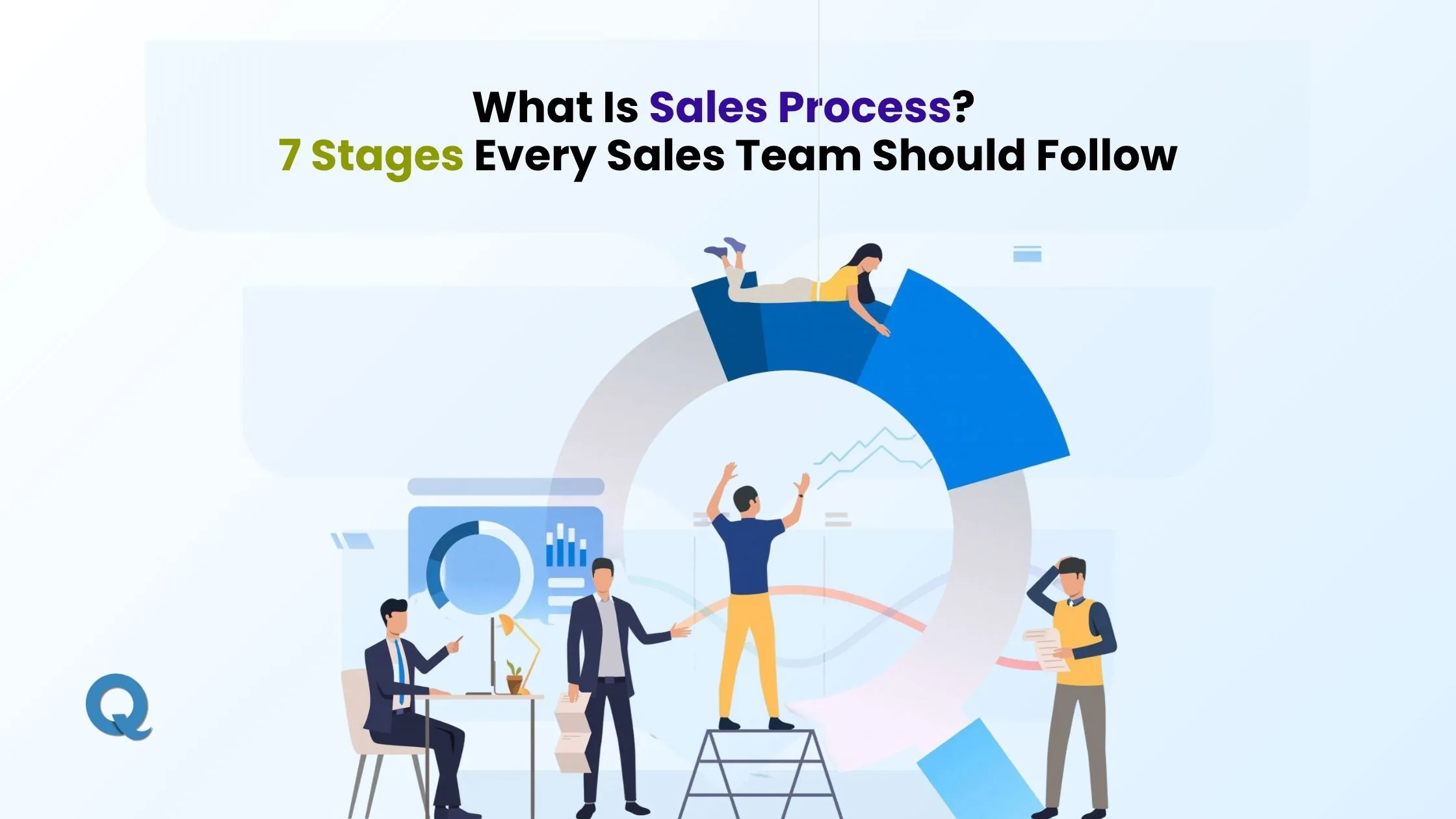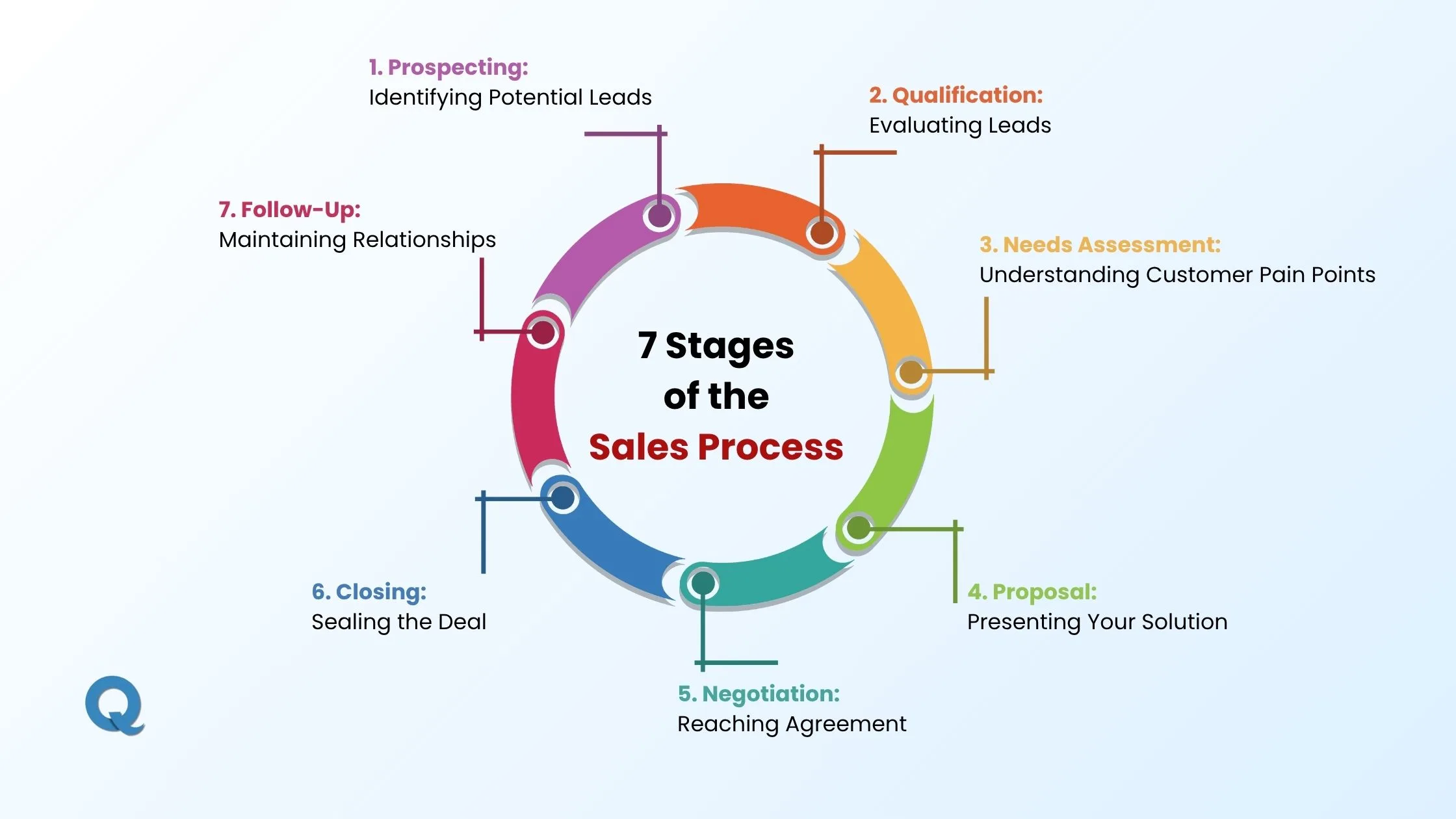What is Sales Process? 7 Stages Every Sales Team Should Follow
Learn what is Sales Process and how mastering the 7 stages can help your sales team close more deals and boost overall performance
Author: Abhilash Dama
Learn what is Sales Process and how mastering the 7 stages can help your sales team close more deals and boost overall performance
Author: Abhilash Dama

When you are trying to grow your business, a clear and strong sales process is one of your most valuable assets. Without a structured process, sales teams can fall into confusion, wasting valuable time and missing out on deals. But when you know what is sales process and use a clearly defined process, you are setting your team up to success.
A sales process helps organise your sales efforts, provides clarity for your team, which in turn results in higher conversions. In fact, studies reveal that businesses that have a defined sales process experience 33% higher growth in sales.
In this blog, I am going to break down the 7 stages of the sales process, giving an insight of how they fit in various B2B and B2C models, and provide you with valuable tips to improve your sales process.
In simple words, a sales process is a series of steps that your sales team adopts to help move potential buyers through the stages of making a purchase to becoming clients. It’s kind of a roadmap, a blueprint, that leads your sales team from the moment they first make contact with a potential lead to the final sale.
Each step of the sales cycle process meets the specific needs of both the sales team and the potential buyer. With a structured sales process, your team can operate more proficiently, close more business deals and turn more leads into paying customers.
Sales processes differ depending upon the type of business you work for. Let's look at some of the most common sales process models to help you pick the right model for your team.
The B2B sales process usually takes more time and involves multiple people in the decision-making process. The focus is on developing strong relationships and solving complex problems. In this model, sales teams have to deal with large-scale solutions that need detailed negotiations.
The B2C sales process is usually quicker and more transactional. Sales cycles are shorter since you are selling directly to consumers. The main goal here is to close deals quickly and effectively, often relying on emotional appeals and limited-time offers.
Starbucks is a clear example of how technology is used in improving the B2C sales process. In 2017, Starbucks introduced Deep Brew , an AI system that makes the customer experience unique. Besides the Starbucks Rewards program, these new innovations made customers more engaged and allowed decisions to be made more quickly. By focusing on personalisation, Starbucks improved their customer satisfaction, reduced decision-making time, and boosted its sales.
Let’s discuss the 7 steps of the sales process, which are used in every sales model. Understanding these stages is necessary for any business that wants to improve its sales strategies.

Prospecting is the first step in the selling process, where you identify and qualify potential leads. It is all about identifying individuals and companies that you believe will need your product or service. It is an important aspect of any sales strategy because the quality of your prospects influences the overall health of your sales pipeline.
The main challenge during sales process is dealing with a huge number of leads and ensuring that you do not miss any opportunities. With so many prospects to handle, it becomes very easy to forget critical information from each interaction, making it difficult to prioritise and personalise future outreach.
This is where Qoli can be extremely useful. With Qoli's call recording feature, you can easily capture key information from each interaction, whether it was a cold call or an inbound inquiry. By automatically recording and organising these calls, Qoli ensures that you don't miss any important details regarding a lead's specific needs, pain points, or timeline.
Using Qoli, your sales team can:

Once you have got prospects, the next step is qualification. Not all leads are created equal, so understanding if the lead is even worth going after is crucial. Qualification will help you to optimise your sales team's time and energy toward leads that can potentially convert into customers.
The needs assessment stage is important for identifying the specific pain points and challenges of your prospect. By asking open-ended questions and being curious, you can customise your solution to fit their exact needs. This stage acts as a foundation for a personalised approach that will increase the chances of closing the deal.
At this stage, it’s time to propose your solution. Based on the information you have collected during the needs assessment, you can create a custom proposal that shows how your product or service can solve their specific pain points.
Negotiation is where both parties talk through terms, objections and come to a final agreement. It is necessary to stay flexible while holding your limits. Focus on creating mutually beneficial solutions. The goal is to ensure both sides are happy before closing the deal.
Closing is the last stage in the selling process, where you seal the deal through a contract or an agreement. But the data tells us a different story that the average sales close rate in 2023 was only 29%, with a win rate of 21% , meaning there’s a significant opportunity to improve sales efficiency in this critical phase.
By refining your approach, overcoming objections, and utilising the right tools, you can increase your chances of closing more deals and maximising your conversion rate.
Even after the sale, it's essential to follow up. A strong follow-up can result in repeat business, customer referrals, and greater customer lifetime value. In fact, 82% of clients expect to receive a reply to their questions within 10 minutes, which underscores the need for quick and effective follow-up.
A responsive follow-up not only helps resolve any remaining questions but allows prospects to see just how important they are to your company, increasing their experience with your brand.
A sales process checklist is a way to ensure that each person on your sales team has a structured process to work through. Below is a small checklist for an optimised sales process:
Last chance! Get 30% off all Qoli features before this limited-time deal disappears forever.
A sales process is an essential part of a company’s business. By following the 7-step selling process of prospecting through to follow-up, sales teams can increase efficiency, close more deals, and build stronger relationships. Using tactics such as qualifying leads and personalising solutions can increase sales effectiveness even more.
By taking a structured approach and pursuing these steps in a disciplined manner, companies can not only drive sales but also improve the quality of customer relationships and overall business performance.